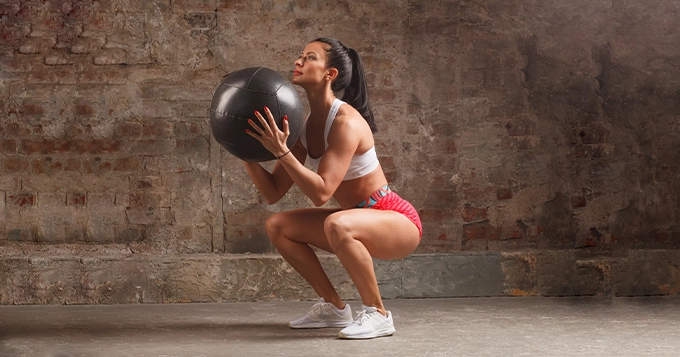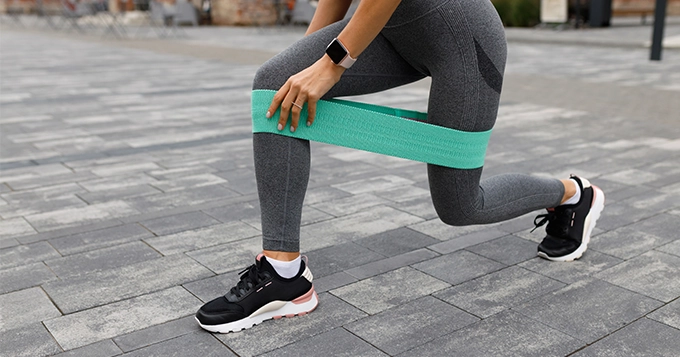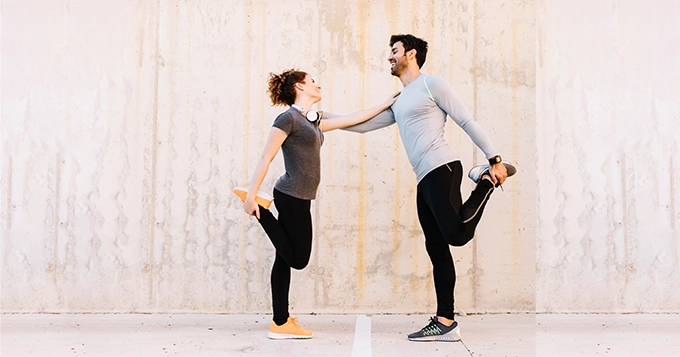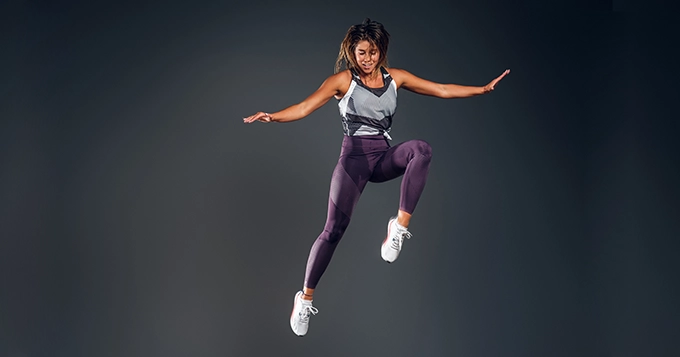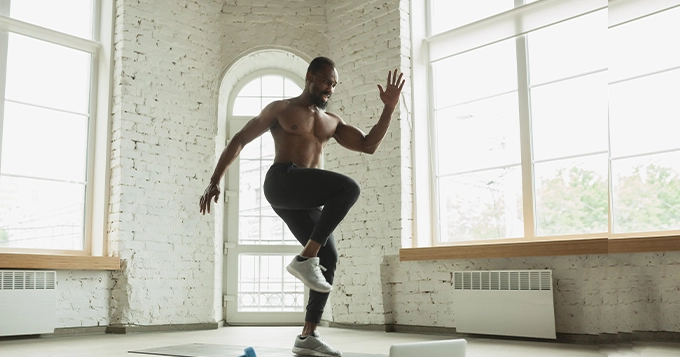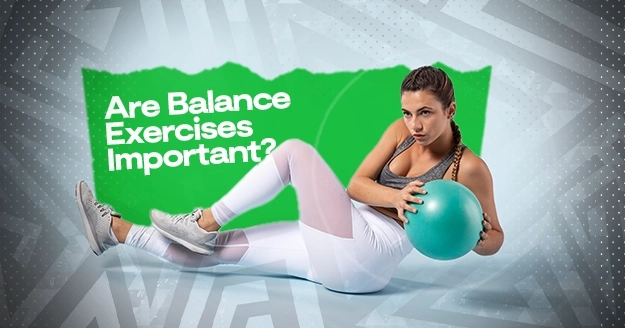In the world of fitness and exercise, balance training sometimes gets overlooked in favor of more traditional strength and cardio workouts. But the truth is, incorporating balance exercises into your training routine is just as important. This article will explain why balance exercises are crucial for overall fitness, injury prevention, and functional well-being.
Benefits of Balance Exercises
By incorporating exercises that challenge and improve balance, individuals can experience a wide range of benefits for their overall health and fitness.
Enhanced Core Strength
Doing exercises that help you stay steady on one leg or in other balance activities can make your core muscles stronger and more stable. These exercises work on muscles that are deeper than the ones you can see, like the ones along your spine and pelvis.
Exercises like standing on one leg, holding a plank, or doing exercises with a stability ball can help improve overall stability and postural support. When you do these exercises, your body has to work harder to stay balanced, which makes these muscles stronger. This is important because it helps keep your spine in a healthy position and makes you stronger overall.
Injury Prevention
Balance exercises not only help prevent falls but also improve how your body knows where it is in space (proprioception) and make your reflexes better. This is important for activities with sudden changes in direction or uneven terrains. By doing balance exercises, you can react faster to unexpected movements, which can help prevent injuries, especially in situations where quick reactions are needed.
Improved Stability and Coordination
Balance exercises that work on muscles that keep you steady help improve your coordination. These exercises, like standing on one leg or using equipment like BOSU balls, make your body work together in a coordinated way.
This helps strengthen the muscles that support your joints and makes it easier to stay balanced during movements. This improved coordination is helpful for activities like sports and everyday tasks that require quick movements, such as sprinting, cycling, and driving.
Functional Fitness Boost
Balance exercises are different from other fitness routines because they help with everyday tasks. Unlike exercises that focus on specific muscles or movements, balance exercises prepare your body for activities you do in daily life. By doing balance exercises, you can develop a functional fitness base, which means you’ll be better prepared to handle tasks like reaching for something on a high shelf or walking on uneven terrain. This can make those tasks easier and more efficient for you. Overall, the functional benefits of balance exercises have a practical impact on your daily life, making it easier to handle the demands of everyday activities.
Joint Health Promotion
Balance exercises not only help with balance and coordination, but they also benefit joint health. These exercises can keep weight-bearing joints like knees and ankles working well by providing a proactive approach. When you do controlled weight-bearing exercises and intentional movements, it helps spread out the forces on your joints in a balanced way. This helps keep your joints strong and healthy, which can reduce the risk of wear and tear from repetitive or high-impact activities. By promoting joint health, balance exercises are a valuable part of preventing musculoskeletal issues and helping people maintain long-term joint functionality.
Mind-Body Connection Strengthening
Balance exercises help connect the mind and body in a deep way. These exercises require focus and concentration, which makes you more aware of your body’s small movements. As you practice, you become better at staying balanced, and this awareness carries over into other parts of your life. This stronger connection between your mind and body helps you handle stress, make good choices, and understand your body better. In short, balance exercises improve your overall well-being by strengthening the connection between your mind and body.
Postural Alignment Improvement
Doing balance exercises regularly can help improve your posture, which is important for your overall musculoskeletal health. These exercises make your body work harder to stay steady, which helps strengthen the muscles that keep your spine and pelvis in a healthy position. This is especially important if you spend a lot of time sitting or have poor posture, because it can help prevent musculoskeletal imbalances and discomfort. By improving your posture, you can also help prevent chronic issues associated with poor posture, like back pain.
Increased Proprioception
Proprioception is like a “sixth sense” that helps your body know where it is without looking. Balance exercises can help improve proprioception because they make you make small adjustments to stay steady. This heightened awareness of your body’s position in space has many benefits, including better spatial awareness, agility, and the ability to adapt to changes in your environment. People with good proprioception also have better motor control and overall bodily coordination.
Enhanced Agility and Flexibility
Balance exercises that involve moving around and changing positions can improve your agility and flexibility. These exercises make you move in different ways while staying steady, which can help make your joints more flexible. The movements in balance exercises also help your body get used to moving in different directions, making you more agile. This is important for activities that require quick and coordinated movements, like playing sports or navigating an obstacle course. Overall, these exercises can help you become more versatile and resilient in your physical abilities.
Stress Reduction and Cognitive Benefits
Doing balance exercises can also help reduce stress and improve your thinking skills. When you do these exercises, you have to focus your mind, which can help you relax and forget about other things. This can be like a mental break for you. Additionally, some studies suggest that doing balance exercises can improve your thinking skills, possibly because they challenge your brain to adapt to new movements. So, in addition to the physical benefits, balance exercises can also have mental benefits.
Balance Exercises for Athletes
Athletes, regardless of their sport, can greatly benefit from incorporating balance exercises into their training routines. These exercises not only enhance overall stability but also contribute to improved coordination, agility, and injury prevention.
- Single-Leg Stance
Single-leg stance is one of the best exercises to help with balance. Stand on one leg for 15-30 seconds and switch to the other. This exercise enhances ankle stability and improves proprioception, crucial for sports that involve quick changes in direction.
- Lateral Jumps
Jump laterally from side to side, landing softly on each leg. This exercise improves lateral stability and strengthens the muscles responsible for quick lateral movements common in sports like basketball and tennis.
- Medicine Ball Rotational Throws
Stand on one leg while performing rotational throws with a medicine ball. This exercise enhances rotational stability, crucial for athletes in sports like golf, baseball, or any activity involving twisting movements.
- Crossover Step-Ups
Step up onto a bench or platform, crossing one leg over the other. This exercise improves hip stability and strengthens the muscles responsible for lateral movements, benefiting athletes in sports like soccer or football.
- Dynamic Planks
Perform planks with dynamic elements, such as lifting one arm or leg at a time. This challenges your core stability and helps improve overall body control, crucial for athletes participating in sports that require balance during dynamic movements.


